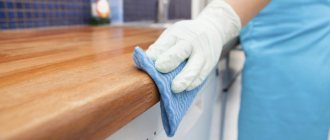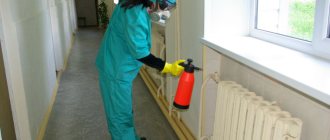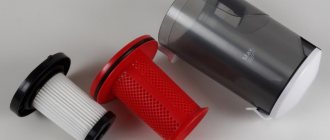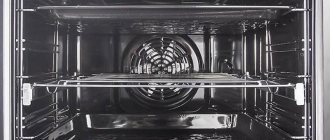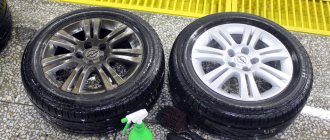The process of cleaning windows is only tedious if it is done incorrectly.
If you approach this issue wisely, choose the appropriate product and equipment, and strictly follow the instructions, then the glass will always remain clean, and the procedure itself will not take much time.
Read the article about how to properly wash windows in an apartment and on a balcony so that they don’t get dirty longer, how to remove old paint from glass and traces of foil.
How to wash properly without special equipment?
You need to start cleaning windows when the weather is right . It is advisable to choose a cloudy and windless day, since direct sunlight on the glass will cause the product to dry quickly, and they also make it difficult to objectively assess the degree of cleanliness of the washed window.
If the weather is suitable, the task can be completed without special equipment. All you need is a rag, a bowl of warm soapy water and old newspapers.
Clean and streak-free inside the apartment
Instructions for cleaning windows from the inside:
You need to remove all objects that are on it from the windowsill. Blinds and mosquito nets are removed and washed separately.- Add a little liquid soap to warm water. Soak a sponge in the solution and wash the frames.
- Then they begin to wash the glass. Stubborn stains are removed using special means.
- Wipe the inside surface of the windows with clean water, rinsing the cloth 2-3 times.
- Several newspapers are crumpled and polished on the glass. The paper will absorb excess water and will not leave streaks.
High quality and safe from the outside, from the street
Washing windows from the outside without special equipment can be dangerous if the apartment is on a high floor.
The following instructions will help you cope with the task without risking your life:
- the opening sash must be washed according to the same principle as the windows inside;
- To wash the cast half of the window, you will need insurance, since you will have to reach out - you can use a special carabiner designed for climbers, or ask for help from household members, because You cannot bend far beyond the window without insurance;
- first you need to wipe the outer frames, as a lot of dust accumulates on them, then you should walk along the slope with a rag;
- The glass is washed with soapy water, removing all dirt, then rinsed with clean water and wiped with a dry cloth.
When carrying out work, do not lean against glass or an open sash; this is unsafe.
Basic rules for washing windows
- Windows should be washed at least twice a year. But if you live on the ground floor or near a busy highway, you should wash them more often as they become dirty.
- It is better to choose a clear and calm day for work, but avoid extreme heat. In sunny and windy weather, the cleaning composition dries quickly on the glass, causing cloudy stains to appear. It is also impossible to wash a window in sub-zero temperatures, otherwise it may burst due to a strong temperature change.
- Prepare several clean rags in advance for washing and wiping the glass. Do not use hard sponges, brushes or powders to avoid scratching the surface - micro-scratches will make the glass cloudy. Do not use rags with long piles, otherwise they will leave threads on the glass.
- Wash windows from top to bottom to avoid spreading dirt onto already clean areas.
Choosing a glass cleaner
You can wash the window using improvised means. They do not require financial costs and are easy to use. If you don’t want to study and prepare the compositions yourself, you can purchase them in the store. There is a wide range of window cleaning products available, and they are inexpensive.
Folk recipes
You can even wash windows with plain water, but this procedure is quite tedious. You can make the task easier with the help of folk remedies that are found in every home:
- Vinegar. To prepare the solution you will need 1 glass of water and 3 tablespoons of 9% vinegar.
- Lemon juice . It is taken in the amount of 4 tablespoons per glass of water.
- Ammonia . For 2 glasses of water you will need 2 tablespoons of ammonia.
- Vodka. It is diluted with water in a ratio of 1:3.
Any of the listed solutions is poured into a spray bottle, with which it is applied to the glass. You will find many folk recipes for washing windows here.
Special formulations
There are many window cleaning products available on the market. Based on the following criteria, you will be able to select the optimal composition:
- Liquids based on benzyl or isopropyl alcohol. They dissolve grease stains well, including old ones, and do not leave streaks behind.
- Liquids in which surfactants are the base component. They have high cleaning properties and are safe for windows and human health.
- Sprays with ammonia. They are chosen to combat stubborn stains, as well as to give the window surface a glossy shine.
The auxiliary components are: acids, silicones, antistatic agents, water-repellent substances. Popular brands of window cleaning products:
- Clin (140 rubles),
- Mr. Muscle (200 rubles),
- Unicum (110 rubles) and others.
The rating of the best window cleaning products is presented in this publication.
Window glass should be washed as needed, but at least 2 times a year.
11.14. Elimination of current finishing defects (elimination of leaks on ceilings and walls, traces of dampness, mold, filling of cracks, crevices, potholes, restoration of peeling tiles, defects in floor coverings and others) must be carried out immediately.
Chapter 3 (surgery)
6.8. When carrying out routine cleanings using DS solutions (preventive disinfection in the absence of nosocomial infections or routine disinfection in the presence of nosocomial infections), surfaces in rooms, devices, equipment and other things are disinfected by wiping. To do this, it is advisable to use disinfectants with detergent properties, which allows you to combine the disinfection of an object with its washing. If emergency treatment of small areas or hard-to-reach surfaces is necessary, it is possible to use ready-made forms of DS, for example, based on alcohols with a short disinfection time (irrigation method using hand sprayers) or by wiping with DS solutions, or ready-to-use disinfectant wipes.
6.9. Routine cleaning of premises is carried out according to regimes that ensure the death of bacterial microflora; when an nosocomial infection appears in the hospital - according to a regimen that is effective against the causative agent of the corresponding infection. When disinfecting objects contaminated with blood and other biological substrates that pose a danger in the spread of parenteral viral hepatitis and HIV infection, disinfectants should be used in an antiviral mode.
chapter 2 clause 1.8
When choosing products, it is necessary to take into account the recommendations of manufacturers of medical devices used in the organization regarding the impact of specific disinfectants on the materials of these products.
To carry out routine and preventive disinfection in the presence of patients, low-hazard disinfectants (hazard class IV) are used.
1.9. In order to prevent the possible formation of strains of microorganisms resistant to disinfectants, the resistance of hospital strains to the disinfectants used should be monitored, followed by their rotation (sequential replacement of a disinfectant from one chemical group with a disinfectant from another chemical group) if necessary.
Chapter 3 (surgery)
6.12. When using disinfectants in the presence of patients (preventive and routine disinfection), it is prohibited to disinfect surfaces with DS solutions by irrigation, as well as the use of DS that have irritating and sensitizing properties by wiping.
11.7. General cleaning of the premises of ward departments and other functional rooms and offices should be carried out according to a schedule at least once a month, with the treatment of walls, floors, equipment, inventory, and lamps.
11.8. General cleaning of the operating unit, dressing rooms, delivery rooms, treatment rooms, manipulation rooms, sterilization rooms and other rooms with an aseptic regime is carried out once a week. On the day of general cleaning in the operating unit, scheduled operations are not carried out.
Outside the schedule, general cleaning is carried out in case of unsatisfactory results of microbial contamination of the external environment and for epidemiological indications.
To carry out general cleaning, staff must have special clothing and personal protective equipment (robe, cap, mask, rubber gloves, rubber apron, etc.), labeled cleaning equipment and clean cloth napkins.
11.9. When carrying out general cleaning, a disinfectant solution is applied to the walls by irrigation or wiping them to a height of at least 2 meters ( in operating units - to the entire height of the walls ), windows, window sills, doors, furniture and equipment. At the end of the disinfection time (the staff must change their overalls), all surfaces are washed with clean cloth napkins moistened with tap (drinking) water , and then the air in the room is disinfected.
If it is not possible to use disposable cloth napkins, reusable napkins must be washed.
Chapter II 1.4.3.
General cleaning is carried out in order to remove dirt and reduce microbial contamination in the premises of organizations.
During general cleaning , the surfaces of premises (including hard-to-reach ones), doors, furniture, equipment (including lighting fixtures), equipment are washed, cleaned and disinfected using detergents and disinfectants and subsequent air disinfection.
General cleaning of functional rooms, wards and offices is carried out according to a schedule at least once a month; operating rooms, dressing rooms, maternity rooms, treatment rooms, manipulation rooms, sterilization rooms - once a week.
During general cleaning, the regimes for using disinfectants are determined taking into account the profile of the hospital and the microbial contamination of objects.
Chapter 3 (surgery)
6.10. General cleaning in operating rooms, dressing rooms, treatment rooms, manipulation rooms, and sterilization rooms is carried out using disinfectants with a wide spectrum of antimicrobial action according to regimes that ensure the death of bacteria, viruses and fungi.
6.11. General cleaning in ward departments, doctors' offices, administrative and utility rooms, departments and rooms of physiotherapy and functional diagnostics and others is carried out with disinfectants according to the regimes recommended for the prevention and control of bacterial infections.
6.16. Patient care items (oilcloth linings, aprons, mattress covers made of polymer film and oilcloth) are disinfected by wiping with a cloth moistened with a DS solution; oxygen masks, oxygen bag horns, electric/vacuum suction hoses, bedspreads, urinals, enamel basins, enema tips, rubber enemas, etc. - by immersion in a DS solution followed by rinsing with water. Medical thermometers are disinfected using the same method. To process care items (without their labeling) for patients, it is possible to use washing-disinfecting units approved for use in the prescribed manner.
Rules for treating the hands of medical personnel and skin
Patient covers
12.1. In order to prevent nosocomial infections, the hands of medical workers ( hygienic treatment of hands, disinfection of surgeons’ hands ) and the skin of patients (treatment of surgical and injection fields, elbow bends of donors, sanitary treatment of skin) are subject to disinfection.
Depending on the medical procedure being performed and the required level of reduction in microbial contamination of the skin of the hands, medical personnel perform hygienic treatment of hands or treatment of the hands of surgeons. The administration organizes training and monitoring of compliance with hand hygiene requirements by medical personnel.
12.2. To achieve effective washing and disinfection of hands, the following conditions must be observed: short-cut nails, no nail polish, no artificial nails, no rings, rings or other jewelry on the hands. Before treating surgeons' hands, it is also necessary to remove watches, bracelets, etc. To dry hands, use clean cloth towels or disposable paper napkins; when treating surgeons' hands, use only sterile cloth ones.
12.3. Medical personnel should be provided with sufficient quantities of effective means for washing and disinfecting hands , as well as hand skin care products (creams, lotions, balms, etc.) to reduce the risk of contact dermatitis. When choosing skin antiseptics, detergents and hand care products, individual tolerance should be taken into account.
How to choose a rag?
When choosing a rag for cleaning windows, you need to start from what material it is made of. Possible options:
- Faux suede . It collects water and dirt well and does not leave lint behind.
- Microfiber. A reusable rag that not only collects dirt, but also polishes glass perfectly.
- Viscose. Such rags are suitable for applying detergent, but collecting moisture with their help will be problematic.
Popular brands of rags for cleaning windows:
- Master fresh microfiber (80 rubles),
- Starwax microfiber (320 rubles),
- Bagi “Miracle Rag” napkin made of viscose (520 rubles), etc.
You will find tips on choosing cloths for cleaning windows in this article.
How to wash quickly, easily and effectively?
Any window can be washed quickly if you don’t waste time scrubbing away dirt and removing stains. To do this, you need to use detergents with a combined composition, which will include surfactants and alcohol.
It is most convenient to apply the liquid from a spray bottle . This also helps save time. Be sure to pay attention to the rag. It should collect water well and not leave streaks or lint behind.
Another way to quickly clean a window is to use a special device, such as a robotic glass cleaner. It is enough to plug it into the network and install it on the window, and after finishing the work, rinse the rag and put the device away for storage.
Read more in this article.
Difficulties with bars
If the window frames open into the living space, then cleaning windows with bars will not be difficult. The situation is more complicated with cast non-removable structures.
There are several options:
Use a steam cleaner.
Its nozzle is inserted into the existing opening and the device is connected to the network. Under the influence of steam, all dirt will dissolve, even without the use of detergents. However, if the opening is too narrow, then wiping the glass with a rag will not work.- Residents of the first floors (provided the windows are low) can use the Karcher mini-wash.
This device supplies water under high pressure. After using it, not only the glass, but also the grilles will be perfectly clean. If Karcher is not available, then a regular hose will do, but its efficiency is lower. - Call specialists. They have devices that can help you cope with any task. However, cleaning services will cost money.
The last and most labor-intensive option is removing window structures. Although it will not be possible to do without special knowledge and tools.
Window cleaning steps
Before general cleaning, you need to remove all items from the window sills, remove or move roller blinds, curtains, and blinds. Prepare your equipment: if there are no special equipment, you will need a rag, detergent, gloves and a basin.
Sequencing:
- Start with the frame and window opening. These are the most contaminated areas; if you wash them last, you will splash the glass and will have to wash them.
- Wash the outside of the windows first - they are dirtier than the inside.
- Remove dirt with a damp sponge or rag, then apply detergent to the glass, rinse with a clean cloth, moving from top to bottom, and wipe the window dry.
- Wash the inner glass in the same way, but wipe it from left to right. This way you will immediately notice whether there are any streaks left on the outside of the window.
Assistant devices
To make the process of washing windows easier, you can use special devices, of which there are many today. They not only save time, but also help you get to hard-to-reach places if you can’t reach them.
Such devices are indispensable for residents of high-rise buildings, as well as for owners of glazed balconies and loggias:
- Telescopic mop . It has a retractable handle that allows you to reach corners at great heights.
- Magnetic brush . The device is represented by 2 halves, which are attracted to each other by magnets. A person washes only the inside, and the brush located opposite him repeats his movements on the outside of the window.
- Rubber scraper with a short handle (water scraper). With its help, it is easy to remove foam and dirty water from glass after basic cleaning.
- Steam Mop . Powered by electricity, dirt is removed under the influence of a jet of steam. The device can be used for various household needs, for example, for washing tiles.
- Vacuum cleaners for windows . The devices operate on batteries or are powered from the mains. The principle of operation of the device is simple: using a built-in spray bottle, detergent is applied to the glass, then it is wiped with a special nozzle. The completion of cleaning is the suction of liquid into the reservoir. As a result, the entire process takes a few minutes.
- Robot vacuum cleaners for washing windows. These miniature assistants are divided into vacuum and magnetic. The devices operate independently, with virtually no human intervention.
The more complex a device is from a technological point of view, the more expensive it is. You can find out how to wash windows with a Karcher steam cleaner here, how to use a window washer - here, how to use a telescopic mop - here, a magnetic brush - here, robotic vacuum cleaners - in this article, washing vacuum cleaners for windows - in this one.
How to clean plastic and wooden window structures?
Plastic windows are not picky to care for , but in order for them to last longer, they need to be washed correctly:
to remove stains from glass, you can use gels based on alcohol, ammonia or surfactants; ordinary soapy water does the job well;- To care for double-glazed windows, you cannot use powders with abrasive particles and caustic acids;
- you need to pay attention not only to the glass, but also to other components;
- To make cleaning easier, you can use various devices, with the exception of hard brushes, which will lead to scratches.
Old-style wooden frames have many cracks and openings into which dust gets clogged. You can remove it with a toothpick or cotton swab. To care for glass, use non-aggressive solutions, for example, soap or vinegar water.
Do not wash wooden frames with soda, as it destroys the paint and can harm the structure.
You can find out how to wash plastic windows correctly here.
Detergents
To wash wooden frames, fittings and plastic, it is better to choose special compounds that will not damage the coating. You can experiment with cleaning window glass and use improvised means or proven household chemicals.
Traditional methods
Ammonia.
This product will dissolve soap stains and restore shine to the glass. Instructions for use:
- Pour 1 liter of cool water into a clean spray bottle.
- Add 10 ml of ammonia.
- Shake a little and spray onto glass.
- Polish it with a clean, dry cloth.
If you don’t have a spray bottle, just soak a rag in the solution and wipe the glass unit.
Glycerol.
Mix 2 drops of alcohol with 100 g of water and glycerin and apply the solution to clean glass with a microfiber cloth. Glycerin creates a thin film on the glass that will protect it from dirt and dust.
Vinegar.
To clean glass:
- Take 1 liter of water at room temperature and add 2 tbsp. l. table vinegar
- Stir and add a couple of drops of dishwashing detergent.
- Spray the solution from a spray bottle or apply the solution with a clean microfiber cloth.
If there is no vinegar in the house, you can use 2 tbsp. citric acid.
Chalk.
When using this cleaning method, it is important to maintain proportions. If you add a lot of chalk, it will leave white marks on the windows. What do we have to do:
- Add 4-5 tablespoons of chalk to 1.5 liters of water.
- Soak a napkin in the solution, squeeze out excess moisture and wash the glass.
- Wait until the surface is dry and remove any traces of chalk with a clean, dry cloth.
Chalk can be replaced with tooth powder or starch
Tea.
Classic black loose leaf tea without flavorings or flavorings is suitable. Brew a strong drink, let it cool and filter the liquid from the brew. Add 1 tsp to a glass of tea. vinegar and add the solution to 1 liter of water. Spray the glass and polish with a clean cloth.
Salt and soda.
Salt will protect the glass from icing, and soda will help remove complex stains. Prepare the cleaner:
- Add 1 tsp to a glass of water. soda, 2 tsp. salt and 1 tbsp. l. vinegar.
- Stir well to dissolve the salt and soda crystals in the water, otherwise they may leave small scratches.
- Wash the windows with the solution.
Melamine sponge.
Melamine works like an eraser - it erases any dirt, so it can be used to remove grease on kitchen windows or other stubborn stains and deposits. The sponge should be moistened in water without adding soap.
Newspapers.
They are not used to wash glass, but to remove excess liquid. Paper absorbs moisture and detergent residue well, so this method helps get rid of stains. But newspaper can leave particles of paper or traces of ink on the glass, so it is better to choose thick craft packaging without inscriptions.
Household chemicals
On sale there are budget formulations based on ammonia and environmentally friendly products with hypoallergenic components. Popular budget sprays:
- CIF;
- Help;
- Clin.
The TOP environmentally friendly hypoallergenic compositions include:
- Frosch Glass Cleaner;
- Synergic;
- Organic People Eco-spray.
Products marked “eco” are more expensive. But they are made from less aggressive components and without a pungent odor.
Do not use dish soap, shampoos or washing powders to clean windows. They foam a lot: it will be very difficult to wash off such an amount of soap from the glass. Avoid compositions with abrasive particles to avoid leaving scratches on the glass.
How to wash the window sill, mesh, frame and other components?
It is necessary to regularly wash not only the glass, but the entire structure as a whole. Features of component care:
- You should start washing the frame first. If this is not done, the dirt in the corners will smear and stain the glass. Particular attention is paid to fastenings and drain holes. After washing, they must be dried.
- Rubber seals are washed with soapy water and allowed to dry. If this is not done, then over time the seal of the window will be compromised.
- The mesh is convenient to wash in the bathroom. First, it is wiped with a sponge soaked in soapy water, and then rinsed with a shower.
- You need to take care of your window sill regularly. Remove dust and minor dirt with a soft damp cloth. Complex stains are removed with an alcohol or vinegar solution.
- Slopes do not tolerate contact with aggressive substances and hard brushes.
This article will tell you how to wash the mesh; this article will tell you how to wash the window sill.
How to clean windows: step-by-step instructions
It doesn't take much effort to clean your windows. All you have to do is do everything right, and to do this, follow five simple steps.
Photo: Instagram imperiaokon
We remove unnecessary things
Washing windows should begin with cleaning the window sill. It's good if it's usually empty. But most often, at best, there are pots of flowers here, and there may be other items. We completely clean the window sill, preparing the place for cleaning.
Washing frames
Windows begin to be washed from the frames. It may seem strange to some, but this helps optimize the process. If you wash the sashes after the glass, the latter will certainly contaminate the water drips and you will have to repeat the operation again.
We wet the frames with water, rinse them clean with a suitable detergent and wipe dry.
Photo: Instagram petrovna_clean
Cleaning the fittings
This primarily applies to plastic windows. We thoroughly wash the rubber seals that press the glass to the frame, clean all metal window fittings and drainage elements. It is especially important to keep drains clean: if they become clogged, the window will fog up or become covered with ice during the cold season.
Washing glass
The easiest way to do this is with a special product sprayed from a spray bottle. If the glass is too dusty, it must be wiped first. Then apply the detergent composition, wipe the surface with a cloth and polish with a clean cloth.
Photo: Instagram serebrennikova_svetlana
Photo: Instagram dev1c3
Cleaning the window sill
The window is already clean - all that remains is to wash the window sill using any suitable product.
At the end of wet cleaning, it is advisable to lubricate all metal fittings with machine oil, this will extend its service life. Rubber seals on plastic windows are lubricated with a special solution containing silicone. In this way, it will be possible to maintain their plasticity and prevent the appearance of cracks.
Cleaning double-glazed windows on the balcony
To clean the windows on the balcony you will need a mop with a long handle. With its help you will be able to reach the upper corners.
If all the frames are sliding or open inward, washing them from the outside will not be difficult. Be sure to pay attention to their attachment points and guides . If dirt gets into them, it will cause problems with frame movement.
If necessary, double-glazed windows are removed. To do this, the plugs are dismantled, after which the structure is removed from the guides. This article will tell you more about how to wash windows on a balcony, loggia, how to wash panoramic windows - this one, sliding ones - this one.
Gigtest Q&A: Part 2
In the second part we may be presented with the following questions:
- What helps to increase the body's protective properties
- Where is it recommended to provide a room for storing and processing cleaning equipment and preparing disinfection solutions?
- How do worm eggs get into the environment?
- Where is it not allowed to locate entrances to bathrooms?
- At what age can citizens who commit violations of sanitary legislation be brought to administrative responsibility?
- What does smoking contribute to?
- Types of liability for sanitary violations
- Article of the Federal Law No. 52 “On the sanitary and epidemiological welfare of the population”, related to the well-being of children and adolescents, concerns
- During non-school hours, in the absence of children, the temperature in the premises of a general education institution must be maintained at least
- The following zones are distinguished on the territory of the educational institution:
- When there is a lack of fat in the diet of children, the following changes occur in the body:
- With a lack of fluoride in the body, it develops
Lifehacks for cleaning at a high level
Washing windows at height requires insurance. It is good if a second person performs this role. He should hold the washer by the body when he leans out.
You cannot stand on a stepladder or stool next to an open window. Loss of balance can lead to falling from a high floor.
For safer care of double-glazed windows, you can use special devices , for example, a telescopic mop or a robotic window cleaner. Read more about cleaning windows on high floors here.
How to remove different types of contaminants?
If the windows are dirty not only with dust, it is not always possible to deal with the stains with soapy water. Depending on the type of contamination, different means are used:
scratches are polished with GOI paste;- the film is removed using a steam generator;
- the resin can be washed with turpentine, alcohol or gasoline;
- remove paint with acetone;
- bird excrement is removed with toothpaste;
- the foil is soaked in water and carefully removed with a plastic or rubber scraper.
You can find out how to remove scratches on window glass here, and how to remove protective film here.
